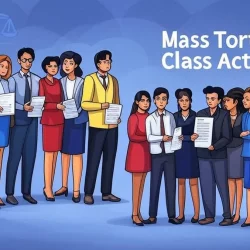How Long Can a Slip and Fall Case Take?
Slip and fall cases are a common type of personal injury claim. They can occur in various settings, from private properties to public places, and often result in serious injuries. Understanding the timeline of a slip and fall case is crucial for victims seeking compensation. The duration of these cases can vary significantly based on several factors, which we will explore in this article.
Factors Influencing the Duration of a Slip and Fall Case
Severity of Injuries: The extent of the injuries sustained in a slip and fall incident can greatly affect the timeline of the case. Severe injuries may require extensive medical treatment and a longer recovery period, which can delay the case. Additionally, more severe injuries often lead to higher compensation claims, which can result in prolonged negotiations or litigation.
Complexity of the Case: Some slip and fall cases are straightforward, while others are more complex. Cases involving multiple factors, such as unclear liability or disputed evidence, can take longer to resolve. Gathering evidence, such as photographs, video footage, and witness statements, can be time-consuming but is essential for building a strong case.
Involvement of Multiple Parties: When multiple parties are involved, such as property owners, tenants, and insurance companies, the case can become more complicated. Coordinating between different parties, obtaining necessary documentation, and negotiating settlements can all contribute to a longer case duration.
Court Availability and Schedule: The availability of the court and its schedule can also impact how long a slip and fall case takes. Courts with a backlog of cases or limited resources may have longer wait times for hearings and trials. Jurisdictional differences can also play a role, as some courts may have faster or slower processes than others.
Initial Steps in a Slip and Fall Case
Consultation with an Attorney: The first step in a slip and fall case is to consult with an attorney. Legal advice is crucial for understanding your rights and options. Selecting the right attorney, particularly one experienced in slip and fall cases, can significantly influence the outcome of your case.
Investigation and Evidence Collection: Once you have an attorney, the next step is to gather evidence. This includes taking photographs of the accident scene, obtaining video footage if available, and collecting witness statements. Medical records documenting your injuries are also critical. The thoroughness of this investigation can impact the strength and duration of your case.
Filing the Claim
Notification to the Responsible Party: After gathering evidence, your attorney will notify the responsible party of your claim. This typically involves sending a formal demand letter outlining the details of the incident, your injuries, and the compensation you are seeking. The defendant will have a specified time to respond to this letter, which can vary depending on the jurisdiction and complexity of the case.
Insurance Claims Process: If the responsible party has insurance, the next step is to file a claim with their insurance company. This process involves submitting documentation of the incident and your injuries. The insurance company will then conduct its own investigation. Negotiations for a settlement may occur during this phase. Insurance companies often aim to settle quickly, but if the offer is insufficient, further negotiations or litigation may be necessary.
Pre-Trial Procedures
Discovery Phase: If a settlement is not reached, the case moves into the discovery phase. This is a critical stage where both parties exchange information and gather additional evidence. Depositions, where witnesses provide sworn testimony, are conducted. Interrogatories, or written questions that must be answered under oath, and requests for documents are also common. The discovery phase can be lengthy, depending on the complexity of the case and the cooperation of the parties involved.
Motions and Hearings: During the pre-trial phase, either party may file motions, such as a motion for summary judgment or a motion to dismiss. These motions are requests for the court to make a decision based on the evidence presented without proceeding to a full trial. Hearings may be held to argue these motions. The court's decisions on these motions can significantly impact the case's duration and outcome.
Settlement Negotiations
Mediation and Arbitration: Before proceeding to trial, many slip and fall cases go through alternative dispute resolution methods such as mediation or arbitration. Mediation involves a neutral third party who helps both sides reach a mutually agreeable settlement. Arbitration, on the other hand, involves a neutral arbitrator who hears both sides and makes a binding decision. These methods can be quicker and less costly than a full trial, but they also require both parties to be willing to compromise.
Settlement Offers: Throughout the process, there may be multiple settlement offers. Evaluating these offers involves considering the compensation amount, the likelihood of winning at trial, and the potential for a higher or lower award. Counteroffers may be made, and this back-and-forth can either speed up the resolution or prolong it if negotiations stall.
Trial Phase
Trial Preparation: If a settlement cannot be reached, the case proceeds to trial. Preparing for trial is an intensive process that involves organizing evidence, preparing witnesses, and developing a trial strategy. This preparation is crucial for presenting a strong case in court.
Court Proceedings: The trial itself can be a lengthy process. It begins with jury selection, followed by opening statements from both sides. The plaintiff presents their case first, including witness testimonies and evidence. The defense then presents their case. After both sides have presented, closing arguments are made. The jury then deliberates and reaches a verdict.
Verdict and Judgment: The jury's deliberation can vary in length, depending on the complexity of the case and the evidence presented. Once a verdict is reached, the court issues a judgment. If the plaintiff wins, the judgment will specify the amount of compensation to be awarded.
Post-Trial Considerations
Appeals Process: Either party may choose to appeal the court's decision if they believe there was a legal error that affected the outcome. The appeals process involves a higher court reviewing the case and can add significant time to the overall duration. Appeals can be complex and require additional legal arguments and briefs.
Collection of Judgment: Once a judgment is finalized, the next step is to collect the awarded compensation. This can involve negotiating payment plans or enforcing the judgment through legal means such as wage garnishment or property liens. The collection process can be straightforward or complicated, depending on the defendant's financial situation and willingness to pay.
Conclusion
In summary, the duration of a slip and fall case can vary widely based on several factors, including the severity of injuries, complexity of the case, involvement of multiple parties, and court availability. Patience and persistence are essential throughout the process. Seeking professional legal help, such as a premises liability attorney, can help navigate the complexities and improve the chances of a favorable outcome.
Additional Resources
For further assistance and information, consider exploring additional articles and legal resources. Contacting a qualified attorney can provide personalized guidance tailored to your specific situation.
More to Read:
Previous Posts:


